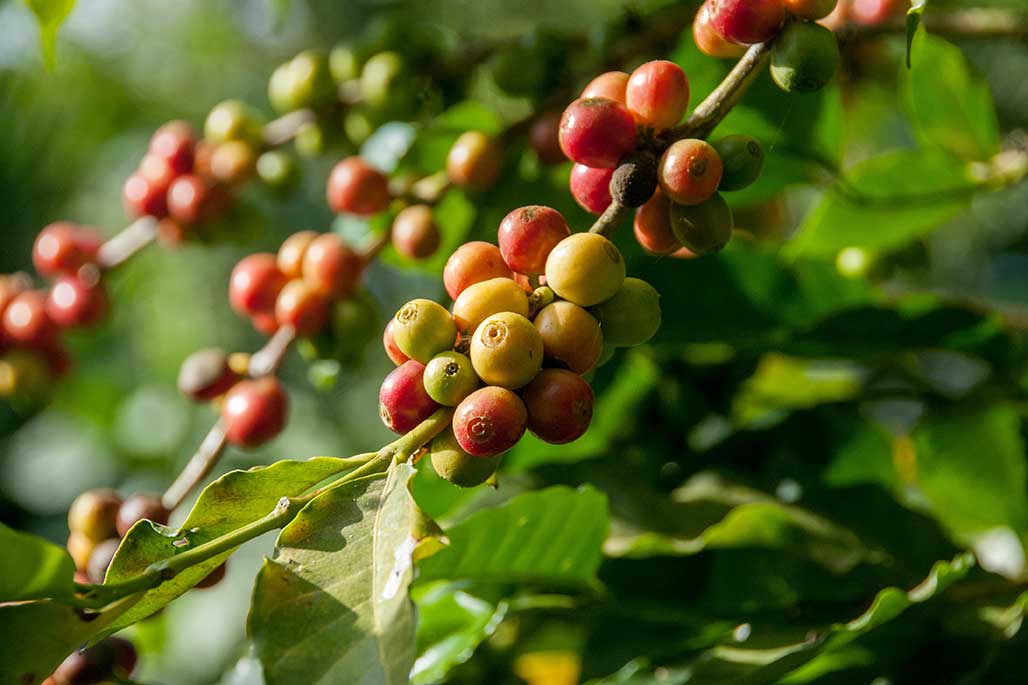GRAPE CO-FERMENT
GRAPE CO-FERMENT
12 Ounce bag of Coffee by Resolute Coffee Co.
Available in Whole Bean or Ground textures.
TASTING NOTES:
COUNTRY: Colombia
REGION: Huila
FARM: Finca Monteblanco
VARIETY: Purple Caturra
PROCESS: Uva (Grape) Washed
ELEVATION: 1.730m Above Sea Level
HARVEST: 2024-2025
CERTIFICATIONS: N/A
ADDITIONAL INFORMATION
FARM DESCRIPTION:
Finca Monteblanco, located high along the winding mountain roads of Vereda La Tocora in the San Adolfo municipality above Pitalito, is a family farm managed by Rodrigo Sanchez Valencia in the tradition of coffee cultivation that began with his grandfather.
Monteblanco’s 18 hectares sit on the crest of a hill, with the wetmill and drying facilities at the top and slopes of coffee planted below.
In 2002, Rodrigo participated in a local program teaching children of coffee producers to cup. Before that, he and his family had never considered coffee in terms of cup profile. By learning to differentiate profiles, he, his father, and grandfather were able to make the connections between the farming techniques they applied and coffee’s attributes in the cup.
At this time, Rodrigo also began to learn about cupping competitions that evaluate the best lots from farms in a region. He noticed that farms would win one year and then never again, so he decided to investigate how to produce quality coffee consistently. This led him to explore the trees planted on Monteblanco, where he discovered various varieties, his grandfather had planted in the 1980’s. One of these varieties is Purple Caturra, a type of Caturra whose cherries ripen to a deep purple color.All harvested coffee cherries are measured in degrees Brix. Based on the indicated sugar content, the team at Aromas del Sur, the umbrella group of the Monteblanco, Progreso, and La Loma farms, then designates which processing method is appropriate.
Purple Caturra was chosen for its versatility and high Brix concentration, which provides an optimal environment for microorganisms like Lactobacillus and Saccharomyces cerevisiae to thrive.
This lot of Purple Caturra underwent a co-fermentation washed method with grape juice, which enhances the coffee’s natural sweetness and high Brix levels to develop a rich and nuanced profile.
Fermentation Process:
1. Microorganism Selection and Cultivation: Lactobacillus and Saccharomyces cerevisiae microorganisms are cultivated separately.
2. Mother Culture Preparation: A portion of these microorganisms is mixed with fruit (in this case, dehydrated grapes) and energizing materials like molasses. This blend ferments for 190 hours in an 80-liter solution to achieve the correct pH and Brix levels.
3. Coffee Fermentation: Harvested coffee cherries are de-pulped, cleaned, and tested for Brix levels. They are then combined with the prepared mother culture in sealed 200-liter tanks. The coffee ferments for an additional 150 hours, while the team at Aromas del Sur monitors the process to ensure Brix levels stay above 6 and pH above
4. This careful balance ensures that the fruit notes enhance the coffee's natural flavor without overpowering its base character.
Rodrigo is proud that he, his wife Claudia Samboni, farm manager Don Gerardo, and the team that works in the fields and at the mill have reached the goal of achieving consistent quality. Each harvest, Finca Monteblanco produces microlots that serve as competition coffees around the world, but the farm also consistently produces containers of delicious coffees that appear year-round on café menus and retail shelves. By applying an ethic of rigorous monitoring, planning, and management of each stage of production and processing, all coffees from Monteblanco showcase their full potential.
Harvesting and processing on Monteblanco have had to evolve with the times, adapting to a changing climate that yields harvest dispersed through ten months of the year rather than in a concentrated peak. Coffees from Monteblanco are milled and prepared for export at the new, state of the art Aromas del Sur drymill in Pitalito.
Region Description:The Colombian Department of Huila is in the southern portion of the country where the Central and Eastern ranges of the Andes mountains converge. Huila’s capital city of Neiva is dry, flat, and desert-like, markedly different from the coffee regions further south.
Centered around the city of Pitalito, Huila’s coffee farms are predominantly smallholder owned and over the past ten years have made concerted efforts to produce specialty coffee that reveals the full character of the region’s terroir. Selective manual harvesting, attentive processing, and careful post-harvest sorting all contribute to increasing recognition of the region.
Huila’s departmental coffee committee, the local connection to the national Colombian Coffee Growers Federation, has invested notable resources into training producers in everything from fertilization to roasting. This, combined with producer enthusiasm, has created a regional culture of quality-focused production.
Huila holds important historic significance dating back to pre-Columbian cultures. The archeological site at San Agustin includes a large number of stone carvings, figures, and artifacts that offer a rare glimpse into the land’s past prior to colonialism.
Couldn't load pickup availability
Share



